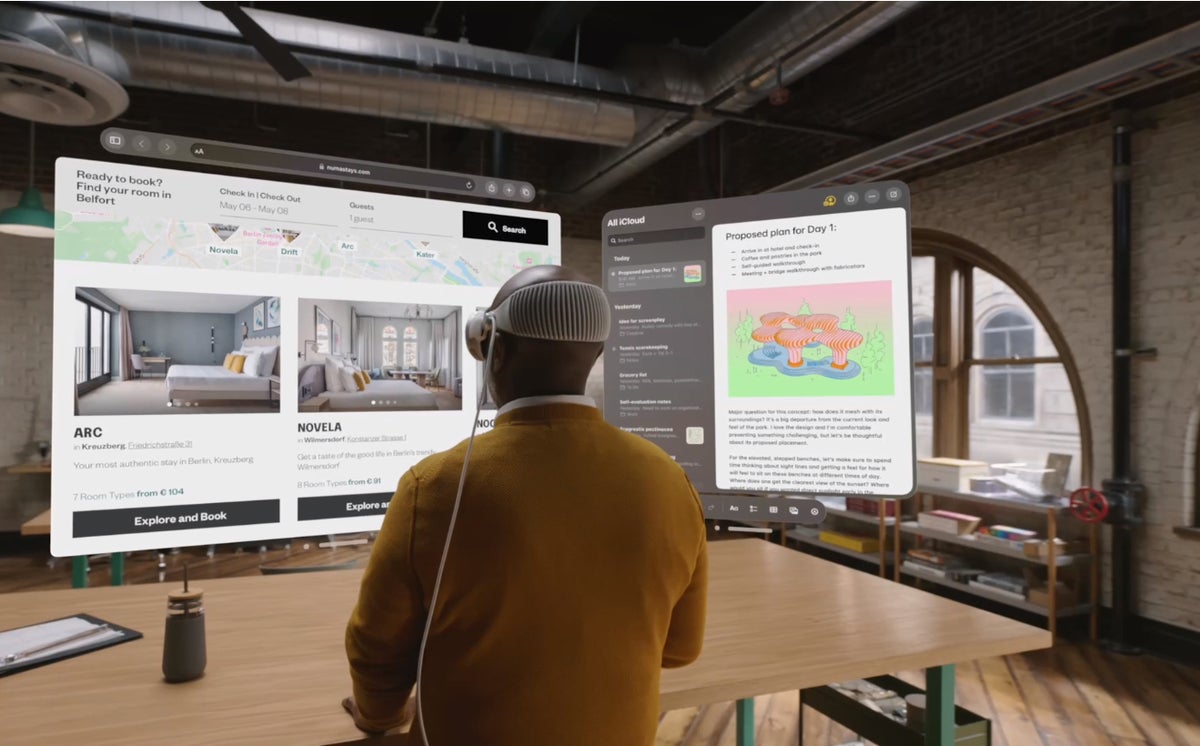Physical Address
304 North Cardinal St.
Dorchester Center, MA 02124
Physical Address
304 North Cardinal St.
Dorchester Center, MA 02124

Apple’s highly anticipated virtual and augmented reality headset, the Vision Pro, experienced a surge in pre-sales, with the initial stock selling out quickly after online sales began. However, despite the initial excitement, there are indications that the demand for this $3,500 device might be limited.
According to Ming-Chi Kuo, an analyst from TF International Securities who closely monitors Apple, an estimated 160,000 to 180,000 headsets were sold over the weekend. While these numbers may seem impressive, they pale in comparison to the opening weekends of new iPhone models, which typically sell out immediately.
One notable aspect is the stability of delivery dates for the Vision Pro. Unlike previous Apple product launches where shipping times for back-ordered items continued to extend, the delivery dates for the Vision Pro remained steady at five to seven weeks. This stability suggests that there may be a ceiling on the current demand for the device.
So, who are the primary customers driving the initial surge in pre-sales? Developers, power users, and businesses are likely to be at the forefront of those purchasing the Vision Pro. These early adopters are eager to explore the device’s capabilities and develop third-party software to enhance its functionality.
While the Vision Pro may not be intended for everyone, it holds potential for enterprise use in various fields such as field service, collaboration, and training. IDC research director Ramon Llamas emphasizes the importance of third-party integration to expand the device’s potential use cases. Collaborations with major players in enterprise software, including Microsoft, will be crucial in broadening the adoption of the Vision Pro.
Although widespread use of virtual and augmented reality in the workplace is still on the horizon, Apple’s entry into the market is expected to catalyze demand. The company has a track record of making futuristic technologies more accessible to users, as seen with smartphones and smartwatches. While immediate widespread adoption may not be realistic, given time, Apple’s influence could help accelerate the acceptance and integration of VR/AR technologies in various industries.
Looking ahead, Kuo predicts that Apple could sell 500,000 units of the Vision Pro this year, which would support the notion that 2024 will be a significant year for the VR/AR market. After a decline in device shipments in 2023, the launch of highly anticipated devices like the Vision Pro is expected to provide a much-needed boost to the market.
In the next section, we will explore the potential effects of the Apple Vision Pro pre-sales and the implications for the VR/AR market.
The limited demand for the Apple Vision Pro virtual and augmented reality headset can have several effects on the market and the future of VR/AR technology.
The limited demand for the Vision Pro may lead to a perception that the market for high-priced VR/AR headsets is not as robust as initially anticipated. Competitors in the industry may adjust their strategies and pricing models accordingly, taking into account the potential limitations in consumer demand.
With developers, power users, and businesses being the primary customers for the Vision Pro, there may be a shift in focus towards enterprise applications of VR/AR technology. Companies may invest more resources in developing software and solutions tailored to the needs of businesses, such as training simulations, remote collaboration tools, and field service applications.
The limited demand for the Vision Pro may prompt third-party software developers to reassess their investment in creating applications specifically for this device. If the market potential is not as significant as expected, developers may prioritize other platforms or devices with higher consumer demand, potentially slowing down the growth of the Vision Pro ecosystem.
Despite the limited demand for the Vision Pro, Apple’s entry into the VR/AR market is still expected to have a significant impact. The company’s reputation for innovation and user-friendly technology could help raise awareness and acceptance of VR/AR among a broader audience. This influence may extend beyond the Vision Pro itself, as Apple’s involvement could drive advancements and adoption in the overall VR/AR industry.
The limited demand for the Vision Pro may prompt Apple to reassess its pricing, features, and marketing strategies for future iterations of VR/AR devices. The company may seek to address the factors that contributed to the limited demand, such as price sensitivity or the need for more compelling use cases. This iterative process could lead to the evolution of the VR/AR market as a whole, with improved devices and more diverse applications.
While the initial demand for the Vision Pro may be limited, the long-term growth potential of the VR/AR market remains promising. As technology advances, prices decrease, and more compelling use cases emerge, the demand for VR/AR headsets is expected to increase. The Vision Pro’s limited demand may be a temporary setback in the broader trajectory of VR/AR adoption.
In conclusion, the limited demand for the Apple Vision Pro headset has implications for market perception, competitor strategies, software development, Apple’s influence, future iterations, and the long-term growth potential of the VR/AR market. Understanding these effects can provide insights into the current state and future direction of VR/AR technology.
If you’re wondering where the article came from!
#